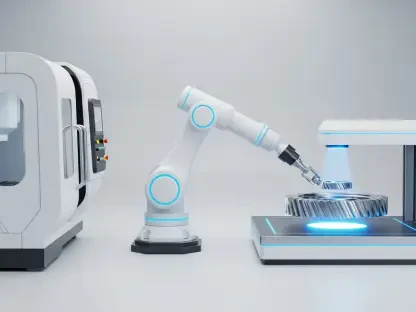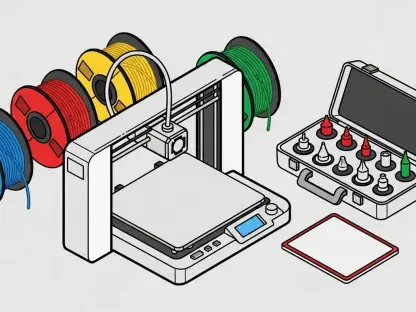Listen to the Article
Imagine a world where objects don’t just stay as they are manufactured but change, reshape, and grow as their surroundings do. This is now a reality, not just a concept from science fiction movies. 4D printing, the next big innovation in production, brings to the table materials that change their shape or function when exposed to heat, water, light, or magnetic fields.
This tech evolved from regular 3D printing but goes beyond it by using “smart materials” (substances that react to stimuli around it). The implications are massive, reaching into areas like space, health, construction, and automotive manufacturing. With the chance to actively change design and functionality, 4D printing is set to change how the world sees materials and production.
How 4D Printing Works
At its core, 4D printing mixes top material science with careful engineering. Using 3D printing technologies, manufacturing objects relies on the three spatial axes x, y, and z, but with 4D printing, there is a fourth dimension, namely “time.” This does not refer to the time taken to carry out the printing. It is simply the time elapsed while objects change shape, and it is the main difference between 3D and 4D printing.
Simply put, 4D printing is “3D printing plus time.” For 4D printing, one single stimulus is required to trigger a transformation. For example, this could take the form of humidity, heat, light, or an electrical field.
The changing process is part of the initial design. Engineers design the material to move or adjust when it meets certain conditions. For example, a component for a space shuttle could be made tiny and then expand in space when the sun warms it. A medical device could change its shape inside a human body, reacting to heat or humidity. This power to react on its own to its surroundings brings a new kind of flexibility never seen in traditional manufacturing.
The Rise of Responsive Materials
The crucial element behind 4D printing’s potential comes from “smart” materials.
Some of the most exciting breakthroughs come from thermo-responsive shape memory polymers, which transform from one shape to another when heated.
Another big step comes with responsive hydrogels, which are materials that react to fluids or humidity. Think of a tube that grows into a blood vessel when it touches body fluids or a smart piece of clothing that changes its breathability based on the humidity outside.
Additionally, using light-reacting materials, like photochromic polymers, manufacturers could create robots that move when exposed to a laser.
The opportunities don’t stop there. Materials controlled by magnets open another new area, leading to wearable exoskeletons for recovering patients or capsules delivering medicine when activated by an external magnet field.
Recent studies have highlighted the potential of 4D printing in various fields. Read on to explore the implications for each sector.
Industries on the Edge of Big Changes
Aerospace
4D printing is starting to shake things up in high-stakes industries, with aerospace and defense leading the charge. They use this tech to make satellite parts that stay small during launch but get bigger in space. Planes might soon change wing shapes while flying in order to optimize performance and increase fuel efficiency.
Rutgers University-New Brunswick engineers have developed lightweight, bendable 4D-printed materials with potential applications in adaptive airplane or drone wings and soft robots.
Healthcare
In the healthcare sector, 4D printing is researched for its potential to revolutionize medical implants and treatment. A review published in the Journal of the Brazilian Society of Mechanical Sciences and Engineering identifies the use of 4D printing in the production of “smart” medical implants and tissue engineering. It suggests that the technology can produce objects that are capable of responding to physiological conditions.
Moreover, technologies in 4D-printed physiological monitoring sensors are designed to provide real-time and continuous diagnostic of health that opens new opportunities for personalized medicine. Experts are working hard to make body implants that fit perfectly to each person and change slowly over time. Medicine delivery systems could react to body heat or pH levels to give more exact and controlled treatment.
“Due to the use of smart materials in 4D printing, the objects can possess the following features: self-assembly, self-disassembly, self-sensing, self-folding, self-repairing, and self-adaptability. For instance, this innovative technology can manufacture a bone as part utilizing of stimuli-responsive materials, and this bone has the ability to extend in the human body over time”, the authors of the paper note.
Construction
The construction sector is also ready for some shake-ups. Imagine buildings that change their ventilation systems based on changes in outside temperature and light or windows that darken by themselves to save energy. Moreover, concrete that can fix its own cracks could cut costs and last longer.
Automotive
Meanwhile, car manufacturers are looking into smart materials. This tech could change the car industry by making car parts that heal themselves or surfaces that shift based on driving conditions. They could also tweak how cars behave aerodynamically based on their speed, shift how the inside materials feel based on user preferences, or even make tires that adapt to different road surfaces.
The Promise and the Problems
With many promises and huge potential, 4D printing is still a pretty new technology that comes with great challenges. First, the price of these smart materials is still high. Second, the infrastructure needed to make 4D printing work is still being built, and companies need new tools and software to create and use these changing structures.
Regulation is another problem, especially in fields like healthcare and aerospace, where there are very stringent safety rules that need to be complied with. Researchers also face the challenge of creating materials that can transform over time without breaking down.
But things are moving forward. As the science behind the new materials gets better, costs go down, and companies become more used to this new way of producing products, 4D printing could become common in the next few years.
The Future of Manufacturing
Moving to smart, changing materials is a big shift in how products are manufactured and used. Instead of making static objects, manufacturers will make items that grow and improve over time. These cut waste and improve performance and reliability.
Imagine a world where buildings self-adjust to the weather, body implants adapt to tissue growth, and cars change their shape and features for the roads they’re on. This isn’t just a step up in production, it’s a whole new way to think about materials and their part in everyday life.
4D printing isn’t just what’s next in manufacturing objects, rather, it will impact how people interact with the world around them.









